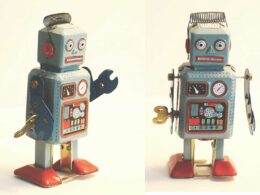What is the customer experience of the future? What best practices do leading organizations deploy now to move from deep listening to deep understanding, from powerful statistics to powerful stories, and from apathy to action? Delivering the customer experience of the future begins with leveraging the current shift in customer expectations and operating context as an opportunity to reset priorities and to ignite momentum.
by Vala Afshar
Groundbreaking new research from Karen Mangia and Mathew Sweezey reveals how Experience Executives are redefining the customer experience and delivering on the promise of Customer Success. From their series of intimate one-on-one conversations with Experience Executives comes a new playbook for success and growth in the next normal.
FOUR CUSTOMER EXPERIENCE PLAYS TO RUN NOW
1. Go narrow and deep.
Instead of trying to be all things to all people, focus. What core products and services are the most profitable? Who can you serve best? Which customers have the greatest Customer Lifetime Value (CLV) potential? “Not all of our customers are affected (by the pandemic) in the same way. Some are thriving while others are struggling,” one CXO of Global SaaS company explained. “So we shifted to focus on going deeper within those accounts who are thriving.” Diving deeper within existing customers requires refreshed marketing and executive programs designed to attract the attention of this redefined group.
Unlocking that coveted growth requires a deep understanding of how customer expectations are shifting. And then building an organizational culture that moves at the speed of those expectations. Delivering the customer experience of the future begins with leveraging the shift in customer expectations and operating context as an opportunity to reset priorities and ignite momentum.
2. Invest in new buyers and influencers.
While many organizations report their customer segmentation remains the same, what’s changed is the persona landscape. There are more decision-makers and influencers in every deal, many of whom are new to the new conversation. “We used to sell to CIO’s and CTO’s,” one Experience Executive shared. “Now we have to justify our value to the CRO as well.”
Who is your customer now? How well do you know your new buyers and influencers? And to what degree do you understand how those buyers and influencers interact to make decisions? Current answers to those questions become a catalyst to revisit and refresh everything from your customer journey maps and key moments of truth to your Go-To-Market (GTM) strategy and marketing messages. “Paint your customer strategy in broader brushstrokes,” one Experience Executive coaches. “An outcome of the shift in persona strategy is to design and invest in programs and messages that go upstream to affect a broader set of buyers.”
Do you have a shared set of personas across your entire organization? How frequently are those personas refreshed? How are those personas proliferated throughout your organization?
3. Simplify and centralize customer insights.
Employees must know where to go to discover insights and resources to help them build rapport and relevance with today’s buyers and influencers. Making it easy for employees to access and to understand customer insights is foundational to the journey. Great Employee Experience positively correlates with great customer experience.
One shared priority among all of the Experience Executives we interviewed was consolidating customer listening silos. How many Voice of the Customer (VOC) repositories does your organization have? How many people or teams in your organization “own” the Voice of the Customer? How are insights and discoveries shared?
Teams are empowered to innovate and to respond more quickly when the Voice of the Customer is centralized. As one manufacturing Experience Executive reminds, “Every day, the customer or the market changes, and methods of knowing and serving our customers must adapt in tandem.”
4. Redefine Customer Success.
Customer success is now defined as Customer Success (CS) = (Customer Outcomes (CO) /Customer Experience (CX)) + Employee Experience (EX), where outcomes are weighted more heavily than experiences and employee experience is a critical factor in the Customer Success equation. “Frictionless experiences are optional,” one Professional Services Experience Executive asserts. “Happy customers with good experiences leave all the time, while unhappy ones stay. The difference is the outcomes they realize. The experience must lead to the desired outcome to be an effective customer retention strategy.” Experiences are the method, outcomes are the goal.
What is the customer experience of the future? What best practices do leading organizations deploy to move from deep listening to deep understanding, from powerful statistics to powerful stories, and from apathy to action?
Customers are willing to tolerate less than optimal experiences in key moments of truth if realized outcomes meet or exceed expectations. One executive we interviewed went so far as to say, “We have happy customers leave all the time, while unhappy ones stay. The difference in who stays is the outcomes they are able to realize.” A focus on outcomes is not new, but what is new is how companies are organizing around outcomes.
According to the State of the Connected Customer report, 84% of business buyers are more likely to buy from a company that demonstrates an understanding of their business goals and outcomes. Customer Success is dependent on delivering customer outcomes. In the second part of the series, we’ll reveal the final two themes and how you can translate these insights into results. Take a deeper dive – and take action – using the slide deck here.
What are you discovering about how to transform your customers’ experience? We invite you to join us on Twitter @valaafshar, @karenmangia, and @msweezey to continue our conversations.
Karen Mangia is Vice President, Customer, and Market Insights at Salesforce. Her work focuses on strategies for personal and professional success, and she regularly works with executives, managers, and future leaders at companies of all sizes globally. She launched two new books in 2020: Listen Up! How to Tune In To Customers, And Turn Down the Noise and Working From Home: Making the New Normal Work For You – both from Wiley. She has been featured in Forbes and regularly writes for Thrive Global and ZDNet. Committed to diversity and inclusion, she serves on her company’s Racial Equality and Justice Task Force. She is a TEDx speaker and the author of Success With Less, a book that chronicles her own personal journey through a life-threatening health crisis.
Mathew Sweezey is Director of Market Strategy at Salesforce. His work focuses on the future of marketing, and what brands must do to stay relevant to consumers amidst the continuously shifting landscape. His latest book The Context Marketing Revolution was published by Harvard Business Press in 2020 and has become an Amazon Best Seller. His work is often featured in leading publications such as The Economist, Forbes, AdAge, The Observer, and Brand Quarterly.
This article originally appeared in ZDNet. Photo by mahdis mousavi on Unsplash.













